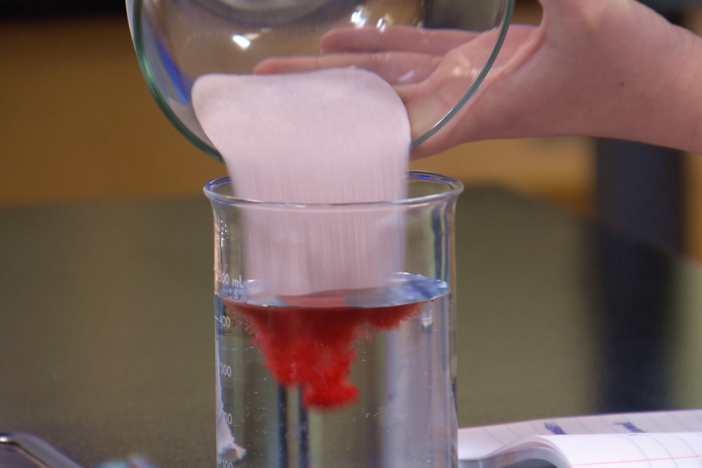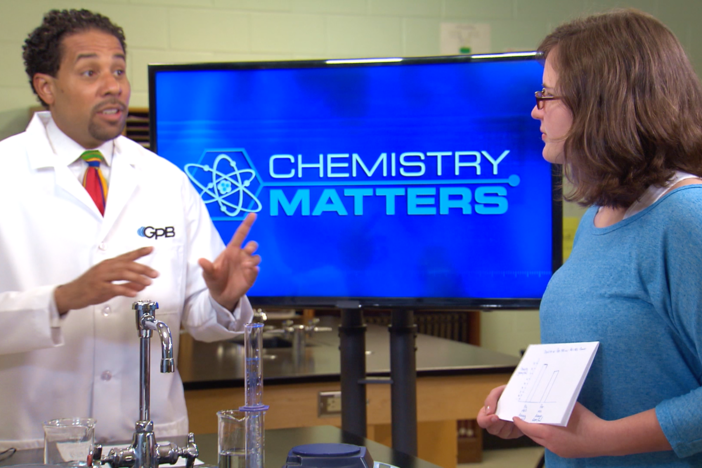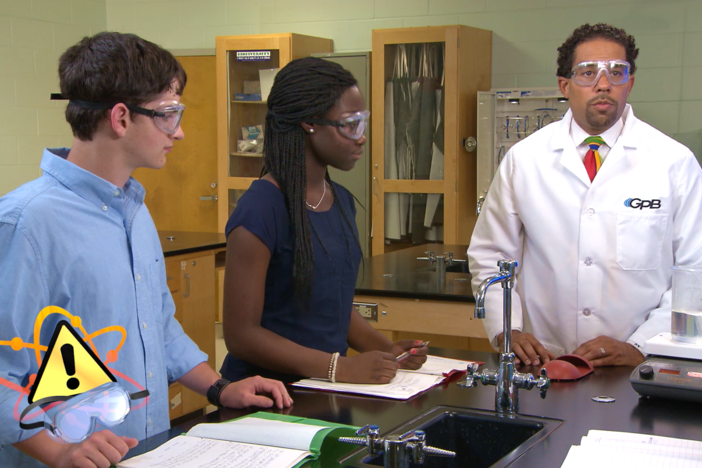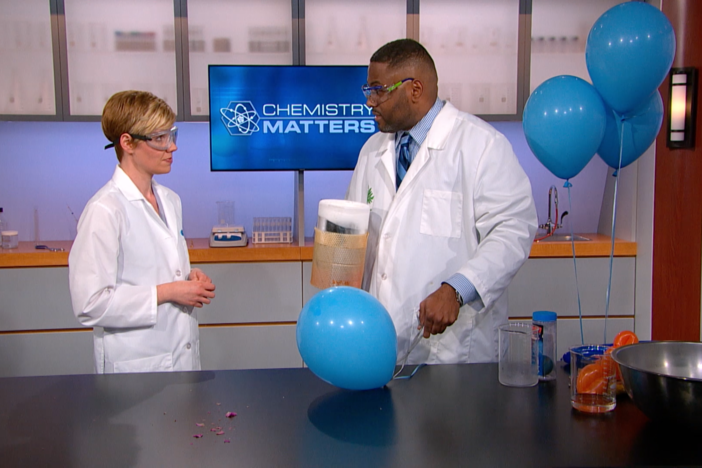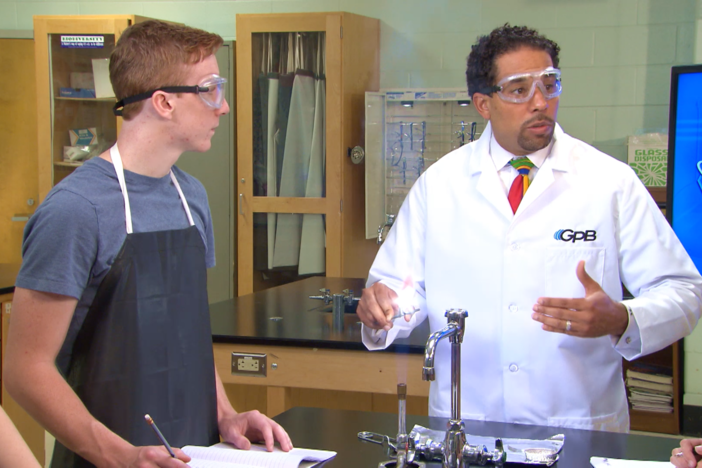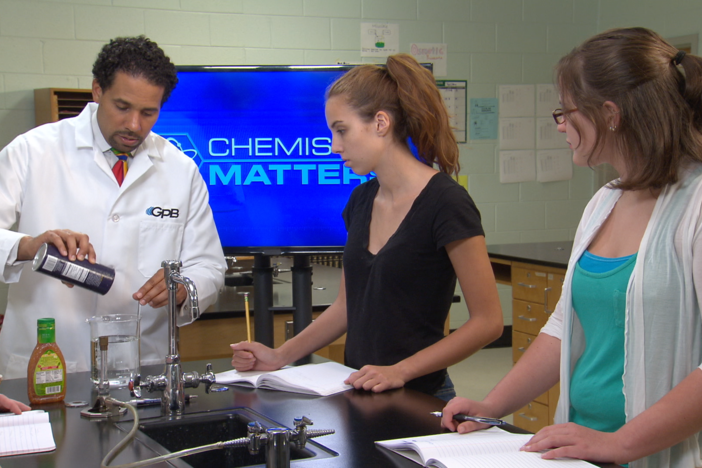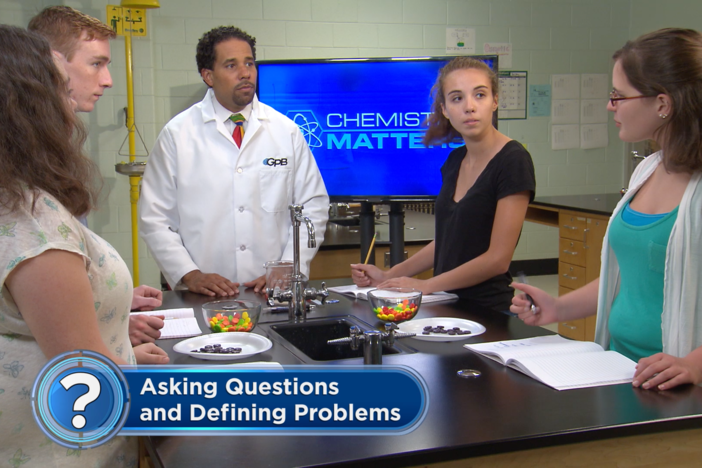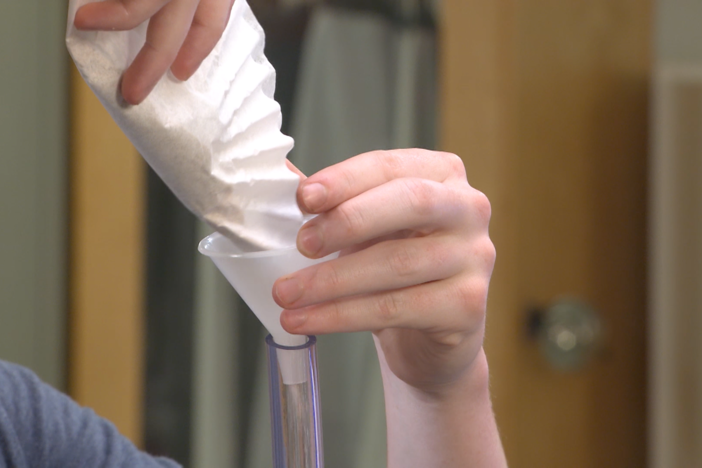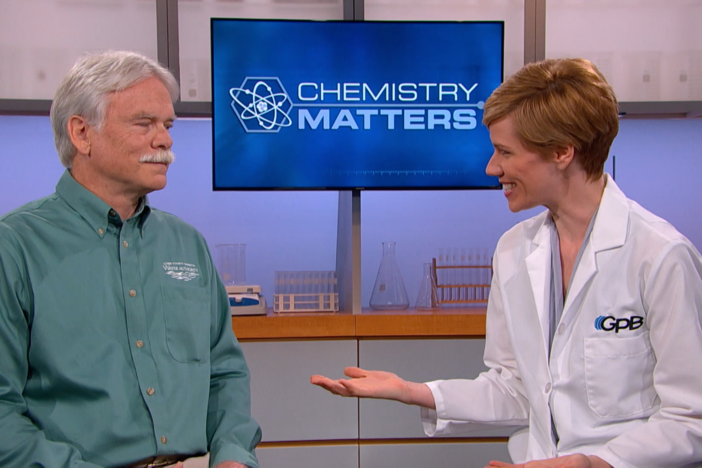Segment D: Phase Change Demonstrations
Dr. Adrian Elliott from the Fernbank Science Center joins us in this segment for a special interview, and our students discuss sublimation and deposition.
Segment D: Phase Change Demonstrations
Dr. Adrian Elliott from the Fernbank Science Center joins us in this segment for a special interview, and our students discuss sublimation and deposition.
Science
Obtain, evaluate, and communicate information about the chemical and physical properties of matter resulting from the ability of atoms to form bonds.
Plan and carry out an investigation to gather evidence to compare the physical and chemical properties at the macroscopic scale to infer the strength of intermolecular and intramolecular forces.
Construct an argument by applying principles of inter- and intra-molecular forces to identify substances based on chemical and physical properties.
Obtain, evaluate, and communicate information about how the Law of Conservation of Matter is used to determine chemical composition in compounds and chemical reactions.
Plan and carry out an investigation to determine that a new chemical has been formed by identifying indicators of a chemical reaction (e.g., precipitate formation, gas evolution, color change, water production, and changes in energy to the system).
Obtain, evaluate, and communicate information to compare and contrast the phases of matter as they relate to atomic and molecular motion.
Ask questions to compare and contrast models depicting the particle arrangement and motion in solids, liquids, gases, and plasmas.
Obtain, evaluate, and communicate information about the structure and properties of matter.
Develop and use models to describe the movement of particles in solids, liquids, gases, and plasma states when thermal energy is added or removed.
alloy - a homogeneous mixture of metals, or a mixture of a metal and a non-metal in which the metal is the major component.
brittleness - a material's ability to absorb energy before fracturing.
chemical change - any change that results in the formation of a new chemical substance.
chemical property - a characteristic of a substance that's observed during a chemical reaction.
chromatography - parts of a mixture are separated based on the ability of each dissolved component to travel through materials at different speeds.
combustibility - occurs when a material catches fire at a temperature above 43 degrees celcius.
compound - any substance formed from two or more elements that have been joined together chemically.
condensation - the phase change that occurs when water vapor cools down to form liquid water.
condensation point - the temperature at which a gas turns into a liquid at standard pressure.
crystallization - the separation of a pure solid substance from a solution containing the dissolved substance.
density - the amount of mass per unit volume.
deposition - when a gas changes directly into a solid without going through the liquid phase.
distillation - the process that separates homogenous mixtures based on the different boiling points of the substances.
enthalpy - the amount of heat in a system at constant pressure.
evaporation - occurs on the surface of a liquid as it changes into a gas.
filtration - a physical process used to separate solids from liquids by passing them through a barrier.
flammability - occurs when a material catches fire at a temperature below 43 degrees celcius.
freezing - when a liquid turns into a solid.
freezing point - the temperature at which a liquid turns into a solid.
heterogeneous mixture - a combination of two or more substances in which the original substances are separated into physical distinct regions.
homogeneous mixture - a combination of two or more substances that have uniform composition and chemical properties throughout; also known as a solution.
intermolecular force - any force that can hold or repel particles.
malleability - how readily a material's shape can be changed.
matter - anything that has mass and takes up space.
melting - when a solid turns into a liquid.
melting point - the temperature at which a solid turns into a liquid.
mixture - a combination of two or more pure substances in which each pure substance retains its individual chemical properties.
phase change - a special type of physical change in which a substance transitions among the states of matter, solid, liquid, and gas, but the chemical properties of the substance remain the same.
physical change - a change which alters a substance without altering its composition.
physical property - a characteristic that can be observed or measured without changing the chemical makeup of a substance. Types include color, odor, texture, boiling point, melting point, and density.
reactivity - the relative ability of a substance to undergo a chemical reaction.
solution - a combination of two or more substances that have uniform composition and chemical properties throughout; also known as a homogeneous mixture.
sublimation - when a solid transistions into a gas without going through the liquid phase.
temperature - a measure of the random kinetic energy in a sample of matter.
vaporization - the phase change from liquid to gas.
The Chemistry Matters teacher toolkit provides instructions and answer keys for labs, experiments, and assignments for all 12 units of study. GPB offers the teacher toolkit at no cost to Georgia educators. Complete and submit this form to request the teacher toolkit. You only need to submit this form one time to get materials for all 12 units of study.
